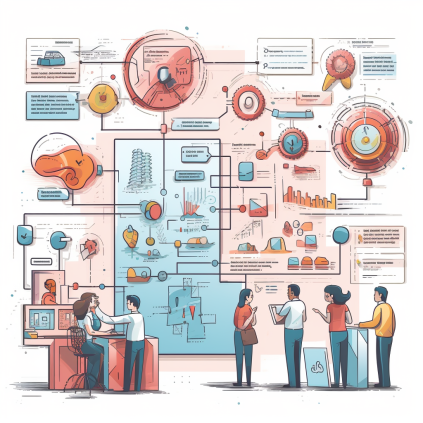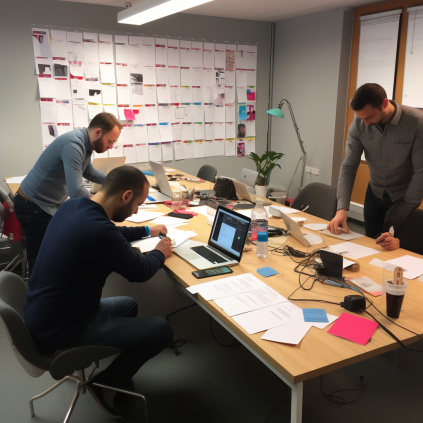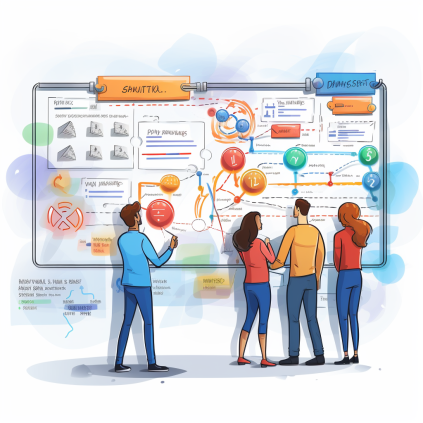Power of User-Centered Design: In today’s fiercely competitive business landscape, companies are constantly striving to create products that stand out and resonate with users. One key approach to achieving this is by embracing user-centered design (UCD) principles in the realm of product management. UCD places the user at the forefront of the product development process, ensuring that their needs, preferences, and pain points are central considerations. In this comprehensive guide, we will explore the essence of UCD, its core principles, and how it drives successful product management, all while providing real-world examples to illustrate its impact.


Power of User-Centered Design
Table of Contents
Understanding User-Centered Design
The Essence of User-Centered Design
User-Centered Design (UCD) is a philosophy and methodology that prioritizes the end user’s needs, preferences, and experiences throughout the entire product development lifecycle. It’s a human-centric approach that seeks to create products that not only function well but also provide a delightful user experience.
Core Principles of User-Centered Design
UCD is guided by several core principles, each playing a crucial role in shaping the product management process:
- User Focus: The primary focus is on understanding the users, their goals, and their pain points. All design decisions should be rooted in this understanding.
- Iterative Design: UCD promotes an iterative approach, where designs are refined and improved based on user feedback and testing.
- Early and Continuous User Involvement: Users are involved from the early stages of product development and remain engaged throughout the process.
- Empirical Measurement: UCD relies on data and user feedback to drive design decisions, rather than assumptions or intuition.
- Holistic Approach: It considers the entire user experience, including usability, accessibility, and emotional aspects.
Now, let’s delve into how UCD principles play a pivotal role in product management.
UCD in Product Management: A Deeper Dive
1. User Research


User Research
Key Role: UCD begins with extensive user research. Product managers collaborate with researchers to understand the target audience, their needs, and pain points.
Example: In developing a fitness app, user research may reveal that users value quick access to workout routines. This insight guides the creation of a user-friendly home screen featuring personalized workout recommendations.
2. Persona Development


Persona Development
Key Role: Personas are fictional characters representing different user segments. They help product managers empathize with and design for specific user groups.
Example: For a mobile banking app, personas could include “Busy Business Owner” and “Tech-Savvy Millennial.” This helps tailor features and messaging to meet their unique needs.
3. Usability Testing


Usability Testing
Key Role: Usability testing involves observing real users as they interact with the product. It helps understand and identify usability issues and areas for improvement from the actual end users.
Example: During usability testing of a website, users might struggle to find the contact information. This feedback leads to a more prominent “Contact Us” button in the navigation.
4. Prototyping and Wireframing


Prototyping and Wireframing
Key Role: Product managers work with designers to create prototypes or wireframes that allow for quick and cost-effective testing of design concepts.
Example: In designing a new smartphone app, wireframes enable product managers to validate the app’s navigation and layout before investing in full development.
5. User-Centered Metrics


Key Role: UCD emphasizes the use of metrics that reflect the user experience, such as customer satisfaction scores (CSAT) and net promoter scores (NPS).
Example: An e-commerce platform tracks NPS to measure user satisfaction. By focusing on improving NPS, the product management team drives positive changes in the platform’s usability and functionality.


6. Continuous Improvement


Key Role: UCD is not a one-time effort; it’s an ongoing commitment to improving the user experience based on user feedback and data.
Example: Social media platforms regularly update their interfaces based on user feedback, ensuring a seamless and engaging user experience.
7. Accessibility and Inclusivity


Key Role: UCD prioritizes making products accessible to all users, including those with disabilities. This involves designing with accessibility guidelines in mind.
Example: A video streaming service ensures that subtitles and closed captioning are available for users with hearing impairments, enhancing inclusivity.
8. Emotional Design


Key Role: Beyond functionality, UCD considers the emotional impact of the product on users. It seeks to create positive emotional experiences.
Example: An online greeting card service not only allows users to send cards but also provides a range of customizable designs that evoke emotional connections and sentiments.
Real-World Examples of UCD in Action
Example 1: Apple’s iPhone
Apple’s iPhone is a classic example of UCD in action. From the very beginning, Apple’s design philosophy revolved around simplicity and user-friendliness. Extensive user research and iterative design led to the creation of a device that not only performed well but also provided a seamless and enjoyable user experience. The iPhone’s success is a testament to the power of UCD.
Example 2: Amazon’s One-Click Ordering
Amazon’s one-click ordering feature is a prime example of how UCD can simplify the user experience. By eliminating the need for multiple steps during the checkout process, Amazon caters to users’ desire for convenience. This feature has significantly contributed to Amazon’s dominance in e-commerce.
Example 3: Google Search
Google’s iconic search engine is another UCD success story. Its clean and minimalist interface, along with lightning-fast search results, is the result of a relentless commitment to user-centered design. Google understands that users value speed and simplicity, and this has been central to their design philosophy.
Power of User-Centered Design : Conclusion
User-Centered Design is not just a buzzword; it’s a fundamental approach that can make or break a product’s success in today’s competitive market. By placing the user at the heart of the product management process, companies can create products that not only meet functional requirements but also deliver exceptional user experiences. Real-world examples like Apple’s iPhone, Amazon’s one-click ordering, and Google Search showcase the transformative power of UCD. In a world where user expectations continue to rise, embracing UCD is not just a choice but a necessity for those seeking to create products that truly resonate with their audience.

